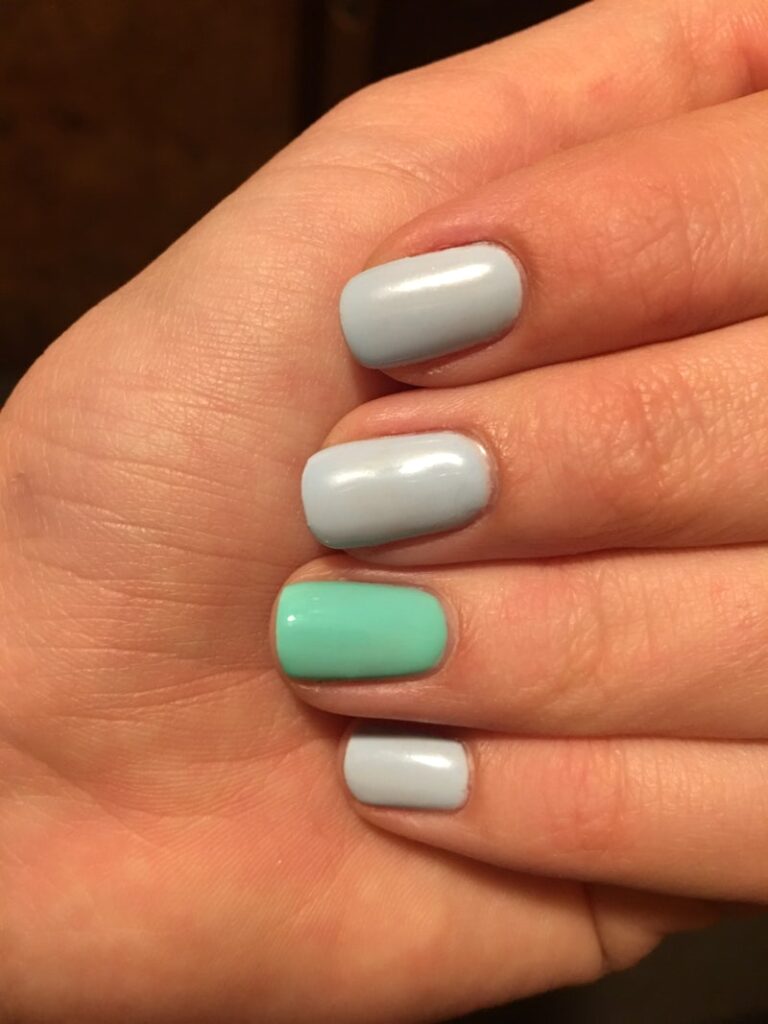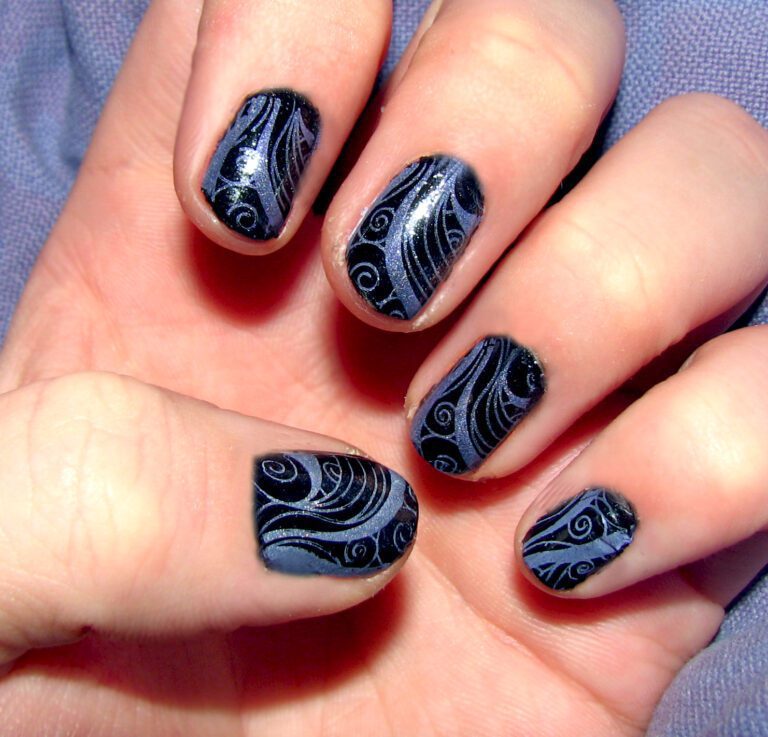“Siding Styles: What Nails to Use for Siding Perfection”
When it comes to siding installation, using the right nails is crucial for achieving a perfect and durable finish. From traditional wood siding to modern vinyl and fiber cement options, each siding material requires specific nails for optimal performance. This article explores the importance of nail selection, techniques for flawless nailing, special considerations for different siding styles, the role of nail guns, and post-installation maintenance tips to ensure siding perfection.
Key Takeaways
- Choosing the right nails for siding materials is essential for long-lasting and secure installations.
- Proper nail length, diameter, material, and coating are critical factors for ensuring a strong grip and weather resistance.
- Understanding the impact of nail head types on siding security is key to selecting the right nails for the job.
- Nail guns can significantly streamline siding projects, but it’s important to select the right nail gun and adjust settings for optimal performance.
- Regular inspection, maintenance, and timely nail replacements are essential for maintaining the integrity of siding installations.
Understanding Siding Materials and Nail Compatibility

The Basics of Siding Materials
When embarking on a siding project, understanding the variety of materials available is crucial. Each type of siding material offers distinct benefits and challenges, which will influence your choice of nails for installation. For instance, vinyl siding is lightweight and relatively easy to work with, whereas fiber cement siding requires more robust fasteners due to its density and weight.
Wood siding, a classic choice, demands nails that can accommodate natural expansion and contraction. Aluminum siding, on the other hand, often requires specialized nails with corrosion-resistant properties to prevent rusting. Below is a list of common siding materials along with their typical characteristics:
- Vinyl Siding: Durable, low maintenance, and easy to install.
- Wood Siding: Natural look, requires regular upkeep.
- Fiber Cement Siding: Fire-resistant, termite-proof, and can mimic the appearance of wood.
- Aluminum Siding: Lightweight, rust-resistant, and recyclable.
Tip: Always consider the local climate and environmental conditions when selecting siding materials and the corresponding nails to ensure longevity and performance.
Choosing the Right Nail for Your Siding Type
Selecting the appropriate nail for your siding is crucial to ensure longevity and durability. The choice of nail depends on the type of siding material you are working with. For instance, vinyl siding requires nails that can accommodate its expansion and contraction due to temperature changes, whereas wood siding benefits from nails that can penetrate deeply and provide a firm hold.
Galvanized nails are often recommended for outdoor siding projects due to their resistance to rust and corrosion. The length of the nail is also important; it should be long enough to secure the siding to the sheathing but not so long that it penetrates into unseen utilities or wiring behind the walls.
Always use nails that are specifically designed for siding. Using the wrong type of nail can lead to siding damage or even failure over time.
Here’s a quick reference list for choosing the right nail for different siding materials:
- Vinyl Siding: Aluminum or stainless steel nails, 1-1/4" to 2" length
- Wood Siding: Stainless steel or hot-dipped galvanized nails, 2" to 2-1/2" length
- Fiber Cement Siding: Hot-dipped galvanized or stainless steel nails, 1-3/4" to 2-1/4" length
Remember, the right nail will not only hold your siding in place but also contribute to the overall aesthetic of your home’s exterior.
Nail Selection Criteria for Durable Siding Installation

Length and Diameter: Ensuring Proper Grip
The length and diameter of siding nails are crucial for ensuring a secure attachment to the underlying structure. Length is particularly important, as it determines how deeply the nail penetrates into the sheathing and framing. A general rule of thumb is that the nail should penetrate at least 1-1/4 inches into the studs. However, the ideal length can vary depending on the thickness of the siding material.
For diameter, a thinner nail may not provide enough holding power, while a nail that is too thick can split the siding. Most siding projects will require a nail gauge that balances strength with minimal material disruption. For example, a 15-gauge nail is commonly used for its sturdy yet accommodating size.
Tip: Always verify the manufacturer’s recommendations for nail size to ensure optimal performance and warranty compliance.
Selecting the correct nail size is not just about function; it also affects the aesthetic finish of the siding. Nails that are too long can protrude and cause unsightly bulging, while those that are too short may lead to siding that is loose or susceptible to wind damage.
Material and Coating: Weather and Corrosion Resistance
Selecting the right material and coating for nails is crucial in preventing weather-related deterioration and corrosion. Nails used in siding must be able to withstand the elements, including rain, snow, and extreme temperatures. Galvanized nails, for instance, are coated with zinc to offer enhanced protection against rust. Stainless steel nails are another excellent choice, particularly in coastal areas where salt spray is a concern, as they provide superior resistance to corrosion.
For homeowners in regions with high humidity or frequent rainfall, choosing nails with a protective coating is not just a recommendation—it’s a necessity. These coatings can range from basic zinc to high-end ceramic treatments. It’s important to match the nail material and coating to the siding material to ensure compatibility and longevity.
Tip: Always consider the local climate and environmental conditions when selecting nails for your siding project. This foresight can prevent costly repairs and extend the lifespan of your siding.
Nail Head Types: Their Impact on Siding Security
The type of nail head used in siding installation plays a crucial role in ensuring the siding remains secure and intact over time. Flat heads are the most common and provide a large surface area that helps to distribute the force of the nail being driven into the siding material, reducing the likelihood of splitting or cracking.
Ring shank and screw shank nails offer enhanced grip due to their unique designs, which resist the forces of wind and environmental stress that can cause siding to loosen. Here’s a quick guide to the different nail head types:
- Flat Head: Best for most siding materials; offers good holding power.
- Ring Shank: Ideal for wood siding; the rings provide extra grip.
- Screw Shank: Suitable for heavy-duty applications; the threaded design increases holding strength.
Tip: Always consider the siding material and environmental conditions when selecting nail head types to ensure maximum security and longevity of your siding project.
Techniques for Flawless Siding Nailing

The Importance of Nail Placement
Proper nail placement is crucial for ensuring the longevity and durability of siding. Nails must be driven into the studs for maximum holding power. This not only secures the siding firmly but also helps in resisting wind uplift. For example, nails should be placed at a consistent distance from the siding edge to prevent splitting or cracking.
When nailing, it’s important to avoid ‘shiners’—nails that miss the studs and only go through the siding material. Shiners can compromise the siding’s ability to withstand weather conditions and can lead to costly repairs. A simple yet effective way to ensure accurate placement is by marking stud locations before starting the nailing process.
Remember: Overdriving nails can be just as detrimental as underdriving them. Nails should be flush with the siding surface; neither recessed too deeply nor protruding. This ensures that the siding is able to expand and contract with temperature changes without becoming loose or buckling.
Tip: Always check the nail’s penetration depth and adjust your nail gun accordingly to achieve the perfect set.
Driving Nails: Best Practices for Siding
Achieving a flawless finish in siding projects is not just about selecting the right materials but also about mastering the art of driving nails. Proper nailing techniques are crucial for ensuring the siding remains secure and aesthetically pleasing over time. Here are some best practices to follow:
- Pre-drill holes in siding materials that are prone to splitting, such as wood, to prevent damage during nailing.
- Ensure nails are driven straight and flush with the siding surface, but not so deep as to create dimples that can collect water or compromise the siding’s integrity.
- Use a consistent nailing pattern to maintain an even appearance and structural stability. For example, space nails at a maximum of 16 inches apart for horizontal vinyl siding panels.
Tip: Extra caution is necessary when using power-driven nails over foam insulation or sheathing to avoid compromising the water-resistive barrier.
Remember, the goal is to secure the siding effectively without causing damage or allowing for future issues such as warping or wrinkling. Regularly check your work for consistency and make adjustments as needed for optimal results.
Avoiding Common Nailing Mistakes
To achieve siding perfection, it’s crucial to sidestep common nailing errors that can compromise the integrity and appearance of your project. One of the most prevalent mistakes is the use of improper nailing techniques, which can lead to a range of issues from siding damage to reduced lifespan.
- Overdriving nails: This can cause the siding to warp or buckle, leading to an unsightly finish and potential exposure to the elements.
- Underdriving nails: Nails that are not driven in far enough can fail to secure the siding properly, making it susceptible to wind uplift and movement.
- Incorrect nailing pattern: Adhering to the manufacturer’s recommended nailing pattern is essential for ensuring even distribution of force and preventing siding from becoming loose over time.
Tip: Always use nails that are specifically designed for the type of siding you are installing. This will ensure optimal performance and longevity.
By paying close attention to these aspects and following best practices, you can avoid the pitfalls that lead to subpar siding installations.
Special Considerations for Specific Siding Styles

Nails for Traditional Wood Siding
When it comes to traditional wood siding, it’s crucial to select the right nails to ensure long-lasting durability and structural integrity. The table below outlines the recommended nail specifications for traditional wood siding:
| Nail Type | Length | Diameter | Material | Coating |
|---|---|---|---|---|
| Common | 2 inches | 11 gauge | Stainless steel | Galvanized |
| Box | 1 1/2 inches | 15 gauge | Aluminum | Polymer |
These specifications are based on the thickness and density of the wood, providing optimal holding power and resistance to weather elements. Additionally, it’s important to consider the driving technique and nail placement to ensure a secure and aesthetically pleasing installation.
Tip: Pre-drilling pilot holes can prevent splitting and ensure precise nail placement, especially in dense wood types.
Choosing Nails for Vinyl Siding Installation
When installing vinyl siding, selecting the right nails is crucial for both the longevity and appearance of your siding. The nails must be corrosion-resistant, such as aluminum, stainless steel, or galvanized roofing nails, to withstand varying weather conditions. They should also have a minimum head diameter of 5/16" to ensure they hold the siding securely without causing damage.
- Proper nail selection is essential for a smooth nailing surface*, which is the foundation of a successful vinyl siding application. The nails should be long enough to penetrate at least 3/4" into the nailing surface but not so long that they cause dimpling or affect the siding’s ability to expand and contract.
Tip: Avoid using nails that are too short or too thin, as they may not provide adequate holding power and could lead to siding failure over time.
Here’s a quick reference for the types of nails suitable for vinyl siding:
- Corrosion-resistant nails (aluminum, stainless, or galvanized)
- Minimum head diameter of 5/16"
- Sufficient length to penetrate the nailing surface adequately
By adhering to these guidelines, you can ensure a secure and aesthetically pleasing vinyl siding installation.
Best Nails for Fiber Cement Siding
When it comes to installing fiber cement siding, selecting the right nail is crucial for both the longevity and appearance of your siding. Hot-dipped galvanized nails or stainless steel nails are often recommended due to their resistance to rust and corrosion. These nails ensure that your siding remains secure and pristine in various weather conditions.
For an efficient installation process, consider using collated nails such as the 15° wire-coil, full-round-head, ring-shank siding nails. These nails come in strips or coils that are compatible with nail guns, making them a time-saver for large projects. The ring-shank design provides extra holding power, which is essential for the heavy weight of fiber cement siding.
Tip: Always verify the compatibility of the nail size and type with your specific brand of fiber cement siding. Manufacturers often provide detailed guidelines to ensure optimal performance and warranty compliance.
When selecting nails for your siding project, consider the following aspects:
- The length and diameter of the nail for proper penetration and grip
- The material and coating for durability against the elements
- The type of nail head for a secure fit without damaging the siding surface
The Role of Nail Guns in Siding Projects
Selecting the Right Nail Gun for Your Siding Material
When selecting the right nail gun for your siding material, it’s crucial to consider the compatibility of the nail gun with the specific siding material. Different siding materials require different nail guns in terms of power, nail type, and firing mechanism. To ensure optimal performance and durability, refer to the manufacturer’s recommendations for the appropriate nail gun specifications. Additionally, always prioritize safety by using personal protective equipment (PPE) when operating a nail gun. Here’s a table summarizing the nail gun specifications for common siding materials:
| Siding Material | Recommended Nail Gun |
|---|---|
| Wood | Pneumatic Framing Nail Gun |
| Vinyl | Cordless Brad Nailer |
| Fiber Cement | Coil Siding Nailer |
Remember, the right nail gun can make a significant difference in the efficiency and quality of your siding installation. Always consult with professionals if you’re unsure about the best nail gun for your specific siding material.
Adjusting Nail Gun Settings for Optimal Performance
Achieving the perfect siding installation requires more than just selecting the right nails and nail gun; it also necessitates precise adjustments to your nail gun settings. The depth of drive is particularly crucial, as it determines how flush the nail sits with, or penetrates, the siding material. An improperly set depth can lead to nails that protrude, which are not only unsightly but can also compromise the siding’s integrity.
To adjust the depth, most nail guns will have a dial or knob that allows for incremental changes. Start with a test piece of siding to find the optimal setting before working on the actual project. It’s important to remember that different materials will require different depths. For example, softer woods may need a shallower drive compared to harder materials.
Pressure settings are another key aspect to consider. Too much pressure can cause the nails to drive too deeply, potentially damaging the siding, while too little pressure might not secure the nail sufficiently. Here’s a simple guideline to follow:
- Begin with the manufacturer’s recommended pressure setting.
- Conduct a test fire on scrap material.
- Adjust the pressure up or down as needed, based on the test results.
Tip: Always wear safety equipment and follow the manufacturer’s guidelines when adjusting and using a nail gun to prevent accidents and ensure a flawless finish.
Maintaining Siding Perfection Post-Installation

Regular Inspection and Maintenance Tips
Maintaining the integrity and appearance of your siding is crucial for ensuring its longevity. Regular inspection is the first step in a maintenance routine. Look for any signs of damage, such as cracks, warping, or discoloration. These can be indicative of underlying issues that may require more than just cosmetic repairs.
Cleaning your siding is also essential. Dirt and mildew can accumulate over time, not only detracting from your home’s aesthetic but also potentially causing damage. Use a soft brush and a mild cleaning solution to gently clean the surface. For vinyl siding, this is especially low maintenance as it does not require painting or sealing.
Tip: Always start with the least abrasive cleaning methods to avoid damaging the siding material.
Finally, address any minor repairs promptly to prevent them from escalating into major problems. This includes replacing loose or missing nails, which is a simple yet effective way to avoid further damage. Regular professional inspections can provide expert advice and identify issues that might not be immediately apparent to the untrained eye.
Replacing Nails in Existing Siding: When and How
When it comes to replacing nails in existing siding, it’s crucial to ensure that the new nails are compatible with the siding material. Use a nail length and diameter that provides a secure grip without causing damage to the siding. Additionally, consider the material and coating of the nails to ensure weather and corrosion resistance. Regular inspection and maintenance are essential to identify and address any loose or damaged nails promptly. Implementing a table for nail replacement frequency based on siding material and climate can provide a structured approach to maintenance.
After the installation of your siding, it’s important to maintain its perfection for long-lasting beauty and protection. At NAILinspire.com, we understand the value of maintaining the quality of your exterior surfaces. Our expert tips and resources can help you keep your siding in top condition, ensuring that your home remains beautiful and well-protected. Visit NAILinspire.com today to discover the ultimate online nail art design library and explore our valuable insights for maintaining siding perfection.
Frequently Asked Questions
What are the best nails for traditional wood siding?
For traditional wood siding, it’s recommended to use hot-dipped galvanized nails or stainless steel nails to prevent corrosion and ensure long-lasting durability.
What type of nails should I use for vinyl siding installation?
For vinyl siding, it’s best to use nails with a large head and a smooth shank to allow for expansion and contraction of the vinyl material.
How do I choose the right nails for fiber cement siding?
When installing fiber cement siding, it’s important to use nails specifically designed for this material, such as hot-dipped galvanized or stainless steel nails to prevent rust and corrosion.
What are the key maintenance tips for siding after installation?
Regularly inspect the siding for any signs of damage, ensure that the nails are secure, and clean the siding as needed to maintain its appearance and functionality.
What nail gun should I use for siding installation?
When selecting a nail gun for siding installation, choose one that is compatible with the type of siding material you are using and ensure that it has adjustable settings for optimal performance.
When should I replace nails in existing siding, and how should I do it?
If you notice loose or damaged nails in existing siding, it’s important to replace them promptly to prevent further damage. Use the appropriate replacement nails and ensure they are securely fastened.







